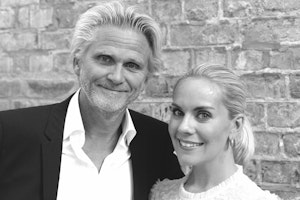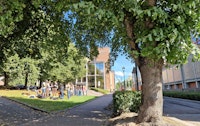Young people’s mental health is being discussed like never before. Young people are struggling, something which also affects students of today and perhaps especially those studying performing arts. As in any high-performance environments, performing artists can quickly run into trouble if the pressure put on them by themselves or others becomes too great. They need to develop resilience. In psychology, resilience means maintaining your mental health despite stress and adversity.
On that basis, it is a paradox that while other high-performance environments for decades have been focusing on psychological and mental mechanisms linked to stress, the issue has been all but absent in the field of art.
The project
Together with stage artist and singer Benedikte Sofie Ribe, Nils H. Sødal has created an R&D project designed to encourage young people to reflect on what helps and what hinders their artistic performance – be it in relation to practice or to concerts and performances. Sødal is an adjunct professor at the University of Agder (UiA) and research coordinator at the Academy of Opera and Dance at the Oslo National Academy of the Arts (KHiO), where he earned a doctorate in performance psychology in 2021. Ribe is a voice teacher at the Department of Classical Music and Music Education at the University of Agder.
One key element of the project is ownership: ownership of our lives, life choices and artistic practice. On a more profound level, ownership has to do with self-empowerment – developing a fundamental perception of the self, involving lived experience of our own character, mind, body and creativity
Such ownership is vital for artists when it comes to individual sustainability. The pressure on young artists today makes it easy for them to lose themselves and their artistic footing, something which is extremely unfortunate in terms of motivation and artistic energy in the long term.
Most established artists would agree that their artistic practice needs to be founded on something deeply personal if they are to survive as artists over time. A mature artist is expected to leave a distinctive signature, a personal fingerprint on their art. The problem is that such ownership is usually expected to develop naturally through learning, something which rarely happens. We therefore need clearly defined strategies to help young artists anchor their art in their own creativity and artistic spirit.
Method
With this project, the students are encouraged to reflect critically on their own practice and to take an inquisitive approach to learning, improvisation and experimentation.
Working with students from the Faculty of Fine Arts at the UiA, Ribe and Sødal will explore a range of approaches to artistic processes based on what the project calls a MY-ness in respect of the art. They will investigate how creative impulses can be found in our own personalities and character and not just express ourselves in response to external expectations and pressures.
A mature artist acts rather than simply reacts to external influences. They do not relinquish their agency or artistic initiative. Another word for this is artistic integrity. Having explored and developed methods for tappig into their own creativity and artistic intuition, Ribe and Sødal will try out the method by inviting performing art students in Norway to an extended seminar at KhiO to challenge and test the method.

